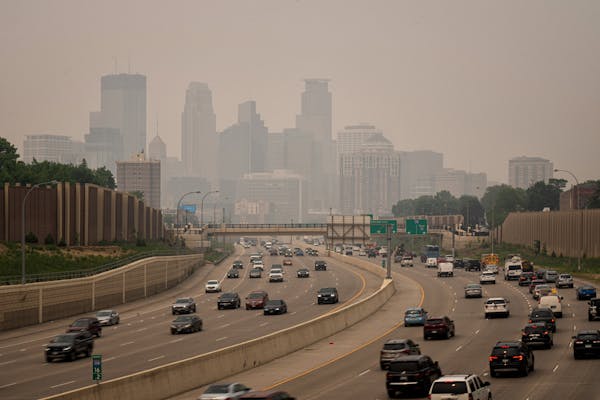DULUTH — With its dry winter, the Superior National Forest is poised to receive up to $20 million in federal funds to help mitigate wildfire risk.
The U.S. Department of Agriculture's under secretary for natural resources and environment visited Duluth and parts of the Arrowhead last week to tour wildfire risk reduction projects and talk to Forest Service employees, tribal members, local leaders and others. In a news conference at the Forest Service's Duluth headquarters, Under Secretary Homer Wilkes said the Superior National Forest "probably has potential to be the highest fire risk place in the eastern part of the United States."
"There was a time when fires were actually a season, but now it's a fire year," he said.
The Greenwood Fire tore through parts of the national forest in 2021, burning 41 square miles, more than a dozen cabins and homes and 60 outbuildings. This year, already the Minnesota Department of Natural Resources has handled 165 fires that have burned through about 8 square miles.
Of the national forest's 3 million acres, 198,000 of them are eligible for Collaborative Wildfire Risk Reduction Program money, from the Biden administration's Inflation Reduction Act. It has the most eligible acres of anywhere else in the eastern half of the country.
Superior National Forest Supervisor Tom Hall said fire risk has hit the area two months earlier than normal because so little snow fell. Fire fuel like sticks, leaves and grasses are dry because they weren't matted down by snow this winter, "so the fire risk is much more elevated than we would typically see this time of year," Hall said.
Recent mitigation efforts include removing fire fuel along the Gunflint Trail, as the spruce budworm kills more trees.
A March report from the National Interagency Fire Center and its Eastern Area Coordination Center said all of Minnesota has significant potential for wildfires.
The Forest Service will apply for the federal money, which should be awarded in the next couple of months. It would supplement ongoing efforts in wildfire education, removal of dead trees and other fuel for forest fires, prescribed burns, and help for communities to guard against wildfire.
Wilkes said the Superior National Forest was well-positioned to receive a portion of the available $100 million, with nearly all other critical areas in the western U.S.

How Minnesota House Republicans ended the DFL's state government trifecta
Project 2025 platform proposal aims to allow mining in Boundary Waters watershed

Ann Johnson Stewart wins special election, giving DFL control of Minnesota Senate

Democratic U.S. Sen. Amy Klobuchar defeats GOP challenger Royce White

